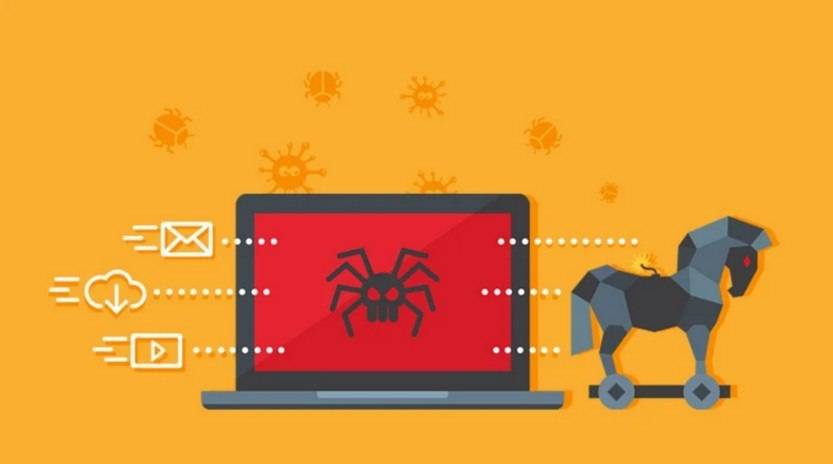Scams have become an unfortunate reality in the digital age, with cybercriminals constantly devising new ways to deceive unsuspecting individuals. One such scam that has gained traction in recent times is the ‘Files Successfully Published’ Google Drive scam email. This deceptive tactic preys on users’ trust in Google Drive and aims to trick them into revealing sensitive information or downloading malware onto their devices.

What is the ‘Files Successfully Published’ Google Drive Scam Email?
The ‘Files Successfully Published’ Google Drive scam email is an email that appears to be sent from Google Drive, a popular cloud storage service provided by Google. The email typically informs the recipient that their files have been successfully published and provides a link to access them. However, this email is not legitimate and is designed to deceive users into taking actions that can compromise their security.
How Does the Scam Work?
The scam begins when the recipient receives an email with a subject line similar to “Files Successfully Published” or “Your Files are Live.” The email is designed to look like a legitimate notification from Google Drive, complete with the Google Drive logo and branding. The body of the email usually contains a message informing the recipient that their files have been successfully published and provides a link to access them.
Upon clicking the link, the user is directed to a webpage that closely resembles the Google Drive login page. The page prompts the user to enter their Google account credentials, including their email address and password. Unbeknownst to the user, this information is being captured by the scammers.
Once the scammers have obtained the user’s login credentials, they can gain unauthorized access to the victim’s Google account. This can lead to various malicious activities, such as stealing personal information, sending spam emails, or even distributing malware to the victim’s contacts.
What to Do If You Have Fallen Victim?
If you have fallen victim to the ‘Files Successfully Published’ Google Drive scam email, it is crucial to take immediate action to protect your account and personal information. Here are the steps you should follow:
- Change your Google account password: Go to the Google Account settings and change your password to a strong and unique one. This will help prevent further unauthorized access to your account.
- Enable two-factor authentication: Set up two-factor authentication for your Google account. This adds an extra layer of security by requiring a verification code in addition to your password when logging in.
- Check for any unauthorized activity: Review your account activity and check for any suspicious or unfamiliar actions. If you notice any unauthorized access or suspicious activity, report it to Google immediately.
- Scan your device for malware: Run a scan with a reliable antivirus software, such as Malwarebytes Free, to detect and remove any malware that may have been downloaded onto your device.
- Be cautious of future emails: Exercise caution when receiving emails, especially those requesting personal information or containing suspicious links. Verify the legitimacy of the email by contacting the sender directly or through official channels.
Technical Details of the Scam
The ‘Files Successfully Published’ Google Drive scam email utilizes various techniques to deceive users and make the email appear legitimate. Here are some technical details of the scam:
- Phishing: The scam relies on phishing, a technique where scammers impersonate a trusted entity to trick users into revealing sensitive information. In this case, scammers impersonate Google Drive to obtain users’ login credentials.
- Spoofed Email Address: The email may appear to be sent from a legitimate Google Drive email address, but it is actually spoofed. Scammers can manipulate the email headers to make it seem like the email is coming from a trusted source.
- Fake Login Page: The scammers create a fake login page that closely resembles the legitimate Google Drive login page. This page is designed to capture users’ login credentials when they enter them.
- Social Engineering: The scammers use psychological manipulation techniques to create a sense of urgency or importance, prompting users to take immediate action without questioning the legitimacy of the email.
Statistics on Email Scams
Email scams, including phishing attacks, continue to be a significant threat in the digital landscape. Here are some statistics that highlight the prevalence and impact of email scams:
- According to the FBI’s Internet Crime Complaint Center (IC3), phishing attacks were the most reported cybercrime in 2020, with over 241,000 complaints.
- A report by Verizon found that 96% of phishing attacks are delivered via email.
- The Anti-Phishing Working Group (APWG) reported a 22% increase in phishing attacks in the first quarter of 2021 compared to the previous quarter.
- A study by Proofpoint revealed that 88% of organizations worldwide experienced spear-phishing attempts in 2020.
Summary
The ‘Files Successfully Published’ Google Drive scam email is a deceptive tactic used by cybercriminals to trick users into revealing their login credentials or downloading malware. It is essential to be vigilant and cautious when receiving emails, especially those requesting personal information or containing suspicious links. If you have fallen victim to this scam, take immediate action to protect your account and personal information by changing your password, enabling two-factor authentication, and scanning your device for malware. Remember, staying informed and adopting security best practices is crucial in safeguarding yourself against such scams.










